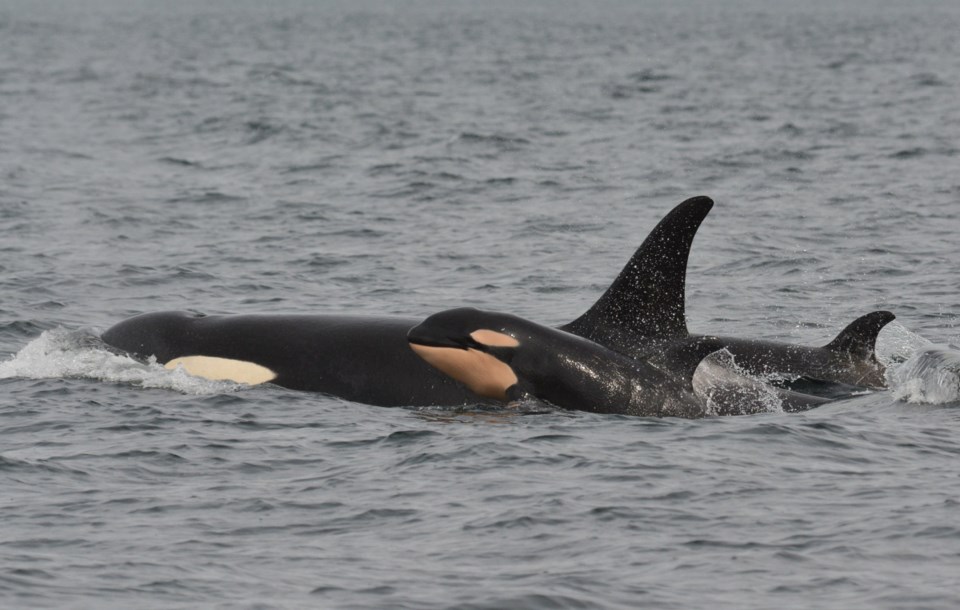Orca advocates are celebrating the birth of another Southern resident killer whale, buoying hope for the future of the endangered species.
As the fourth calf born in about three months, the newborn is part of a baby boom researchers and whale-watchers hope will break a dry spell that saw the population decline to 77 in December.
“This population could have turned a corner here,” said Michael Harris, executive director of the Pacific Whale Watching Association.
“The jury’s still out, but we’re thrilled that we have four new babies among a population like this that’s highly endangered.”
Optimism is tempered by the 50 per cent mortality rate facing the calves in their first year. But the calf appears to be doing well in its first days.
“It looks very healthy, very lively, even playful,” Harris said.
Jeanne Hyde was aboard a Legacy Charters boat from the San Juan Islands on Monday when she spotted what she thought was the three-month old J-50 calf. The boat was following members of the J-pod through Active Pass near Galiano Island.
“I said to myself, ‘There’s mom and baby.’ Two seconds later, another baby surfaces right in front of me,” Hyde said.
The crew noted heavy fetal folds, which indicate it was only days old. Hyde also described “open” saddle patches, which are the markings at the base of the dorsal fins. The open patches distinguished the newborn from the other two J-pod calves, which have solid saddle patches, Hyde said.
Harris, who consulted research scientists, said it’s still unclear who the mother is. One candidate is J-40, although at 11, she is younger than the expected child-bearing age of about 15.
“One thing about J-pod is they do a lot of babysitting, so you’ll see other whales in the pod taking care of babies when the mother is elsewhere briefly,” he said.
If the baby survives, it will be known as J-52.
Beginning in late December, three calves have been born to the J-pod, while a fourth was born to the L-pod. There are now believed to be 80 Southern resident killer whales, with 27 belonging to J-pod, although the calves won’t be officially counted until they reach their first birthdays.
“We’re always cautiously hopeful that things will turn out all right, but you really have to wait around for them to grow up,” said Dave Ellifrit of the Centre for Whale Research.
Researchers would like to see more “baby booms” like this one, he said. There are about 30 female Southern residents of child-bearing age, Ellifrit said, but some never reproduce, some stop after one or two calves, while others are nearing the end of their reproductive years and are less fertile.
Southern resident whales were declared endangered 12 years ago.
It is believed there were about 200 members in the late 1800s, according to National Oceanic and Atmospheric Administration in the United States. That number declined to about 67 by 1973, in part because of the live-capture of whales for oceanarium displays.
The biggest threats to the population today include the decline of dietary staple Chinook salmon, noise pollution and contamination, according to the Raincoast Conservation Foundation.
The population has seen ups and downs since the live-capture ended, but no calves have survived to their first birthday since 2012, according to the Centre for Whale Research. In December, a failed pregnancy led to a bacterial infection that claimed the life of J-32, who was found floating near Comox.



